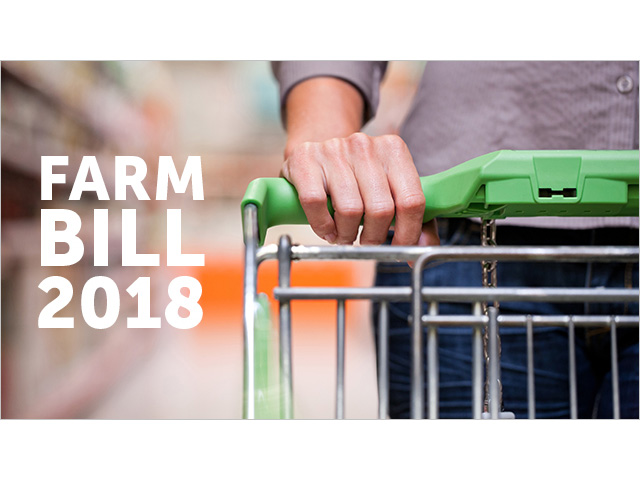A report released today by the Food and Nutrition Service (FNS) of the United States Department of Agriculture (USDA) shows that participation in the Supplemental Nutrition Assistance Program (SNAP) is associated with improved food security. The study, conducted by Mathematica Policy Research, is the largest and most rigorous study to date that assesses the effect of SNAP participation on food security. SNAP (formerly known as food stamps) provides food assistance to more than 47 million low-income Americans every month in an effort to improve food security by facilitating beneficiaries’ access to enough food for a healthy, active lifestyle.
Key findings that offer new insights for policymakers include:
- SNAP is associated with improved household food security. Food insecurity dropped after six to seven months of SNAP program participation (from 65 percent at program entry to 55 percent for the same households about six months later).
- SNAP is associated with improved child food security. Food insecurity among children decreased by roughly one-third (from 32 percent at program entry to 22 percent after six months of program participation).
- SNAP is associated with improved food security for households with a variety of characteristics and circumstances. SNAP was associated with improved food security for households with and without children, households with and without a disabled member, and households without an elderly member. However, SNAP was not associated with improved food security for households with an elderly member.
- Benefit size matters. The improvement in food security associated with SNAP participation was greatest for households that receive larger benefits relative to household need.
James Mabli, the study’s lead author, said, “These findings suggest that policymakers can help reduce food insecurity by promoting policies that help SNAP households maintain their SNAP benefits.”
Results from the study also suggest areas for future research. It is unclear why food security does not generally improve in SNAP households with elderly members. The study also showed that SNAP was associated with increased food expenditures only for households with larger benefits. These findings are consistent across longitudinal and cross-sectional analyses and suggest that the relationship between food security and expenditures on food is complex and needs additional exploration.
Findings from previous studies of the relationship between SNAP and food security have been mixed. Old data, small samples, and inappropriate comparison groups have made definitive estimates of SNAP’s effect on food security an elusive goal. Mathematica’s SNAP Food Security Survey contributes to the evidence base that supports nutrition policy because it is the largest, most rigorous survey of food security and food spending among SNAP participants to date, and it offers the most definitive estimates of the program’s effects.
The study team used comprehensive survey data collected in 2012 on the characteristics and circumstances of SNAP participants from almost 10,000 households in a nationally representative sample of 30 states. Findings related to changes in food security are based on a longitudinal comparison of food security for 3,275 households initially surveyed at program entry. In the first such analysis of its kind, the study also compared food security at one point in time for a group of newly entering households with that of a group of participants who had been in the program for the previous six to seven months (a cross-sectional comparison). These cross-sectional findings were qualitatively similar to those from the longitudinal comparison, and the two analyses together help distinguish true program effects from differences related to household characteristics. The results of this more comprehensive approach can inform the policy discussion on program elements such as benefit size and promote evidence-based policymaking.
To learn more, read the infographic, executive summary, or full report.
About Mathematica: Mathematica Policy Research, a nonpartisan research firm, provides a full range of research and data collection services, including program evaluation and policy research, survey design and data collection, research assessment and interpretation, and program performance/data management, to improve public well-being. Its clients include federal and state governments, foundations, and private-sector and international organizations. The employee-owned company, with offices in Princeton, N.J.; Ann Arbor, Mich.; Cambridge, Mass.; Chicago, Ill.; Oakland, Calif.; and Washington, D.C., has conducted some of the most important studies of education, disability, health care, family support, employment, nutrition, and early childhood policies and programs.

